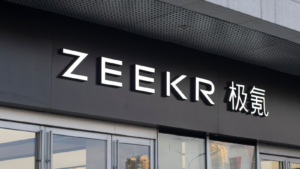The initial public offering activity in the U.S. hit a two-year high in the second quarter of 2024. During the quarter, there were 39 IPOs with $8.9 billion being raised. With the market sentiment remaining positive, companies are looking to take advantage and raise funds for growth. From the perspective of investors, it’s a good time to scan the new listings and consider exposure to high-growth IPO stocks.
Importantly, the relatively smaller IPOs do not grab the limelight of analysts and investors immediately. Therefore, there is a good chance of finding under-the-radar quality ideas from newly listed IPOs.
Let’s explore three IPO listings that are likely to remain in a high-growth trajectory and deliver multibagger returns. These stocks represent relatively early-stage companies that are likely to expand geographically to boost growth. At the same time, the industry outlook is positive and supports the bull thesis.
PACS Group (PACS)

Considering the demographics, positive tailwinds will sustain for the healthcare sector. PACS Group (NYSE:PACS) is among the recent IPOs that looks attractive. The growth company is trading at a forward P/E of 20.4, and it’s a good time to buy.
PACS Group is an operator of skilled nursing and assisted living facilities. The company is currently operational in nine states in the U.S. with 218 facilities. Therefore, the first growth driver is expansion in other states. For mature facilities, PACS Group has an occupancy rate of 94.6%. This underscores the growth potential as facilities mature in the coming years.
Another point to note is that there are 15,000 skilled nursing facilities (SNF) in the U.S. The industry is fragmented, and PACS Group has headroom for growth through acquisitions. In May, the healthcare provider announced the acquisition of 53 SNFs across eight western states.
For PACS Group, cost is the key differentiating factor. The company’s SNF has a cost of care per day of $550. For hospitals and inpatient rehabilitation facility, the cost of care per day is $2,914 and $1,850, respectively. Therefore, PACS has a clear cost advantage.
Fly-E Group (FLYE)

Fly-E Group (NASDAQ:FLYE) is a micro-cap with high potential that was listed last month. The company is involved in the designing, installing and selling of smart electric motorcycles, electric bikes and electric scooters.
For fiscal year 2024, the company reported net revenue of $32.2 million, which was higher by 47.9% year-over-year (YOY). For the same period, EBITDA increased by 43.2% to $3.5 million. Thus, growth has been robust, and the company has already achieved EBITDA level profitability.
Notably, Fly-E Group has 38 domestic retail stores. However, these stores are largely concentrated in the New York City metro area. The company plans to expand presence in other metro areas in the U.S. Expansion plans also include potential entry into Europe and South America. Therefore, geographic expansion is a key growth catalyst for the next few years.
At the same time, it’s likely that the adoption of environment friendly e-bikes will increase. A big target market is the last mile delivery workers, primarily for food and other small packages. Overall, Fly-E is an early-stage growth company that can create massive value. I would consider some long-term exposure to this high-risk bet.
ZEEKR Intelligent Technology (ZK)

ZEEKR Intelligent Technology (NYSE:ZK) is an interesting name from the electric vehicle (EV) space in China. After a strong listing, ZK stock has trended lower by 28% in the last one month. I see this as a good accumulation opportunity for the long term. Once sentiments reverse for the EV industry, I expect ZK stock to skyrocket.
ZEEKAR was incorporated in March 2021. The EV company is still at an early-stage of growth but showing encouraging results. For June, ZEEKR reported 89% YOY growth in vehicle deliveries to 20,106. Further, for year-to-date (YTD), 87,870 vehicles have been delivered, which is higher by 106% YOY. With the recent expansion into Indonesia and Malaysia, it’s likely that deliveries growth will remain robust.
If we look at Q1 of 2024 numbers, multiple positives emerge. First, vehicle margin was healthy at 14.1%. Further, the EV company’s operating level losses have narrowed YOY. Also, ZEEKR reported R&D expense of $266.6 million for the quarter. The R&D is focused on product portfolio expansion coupled with introduction of intelligent technology. With these factors, ZK stock looks attractive for the long term.
On the date of publication, Faisal Humayun did not hold (either directly or indirectly) any positions in the securities mentioned in this article. The opinions expressed in this article are those of the writer, subject to the InvestorPlace.com Publishing Guidelines.
On the date of publication, the responsible editor did not have (either directly or indirectly) any positions in the securities mentioned in this article.
